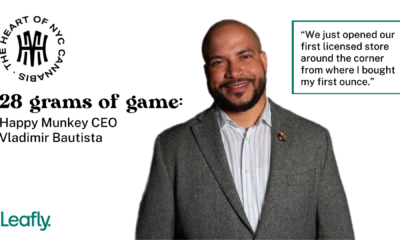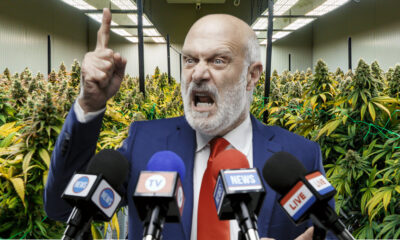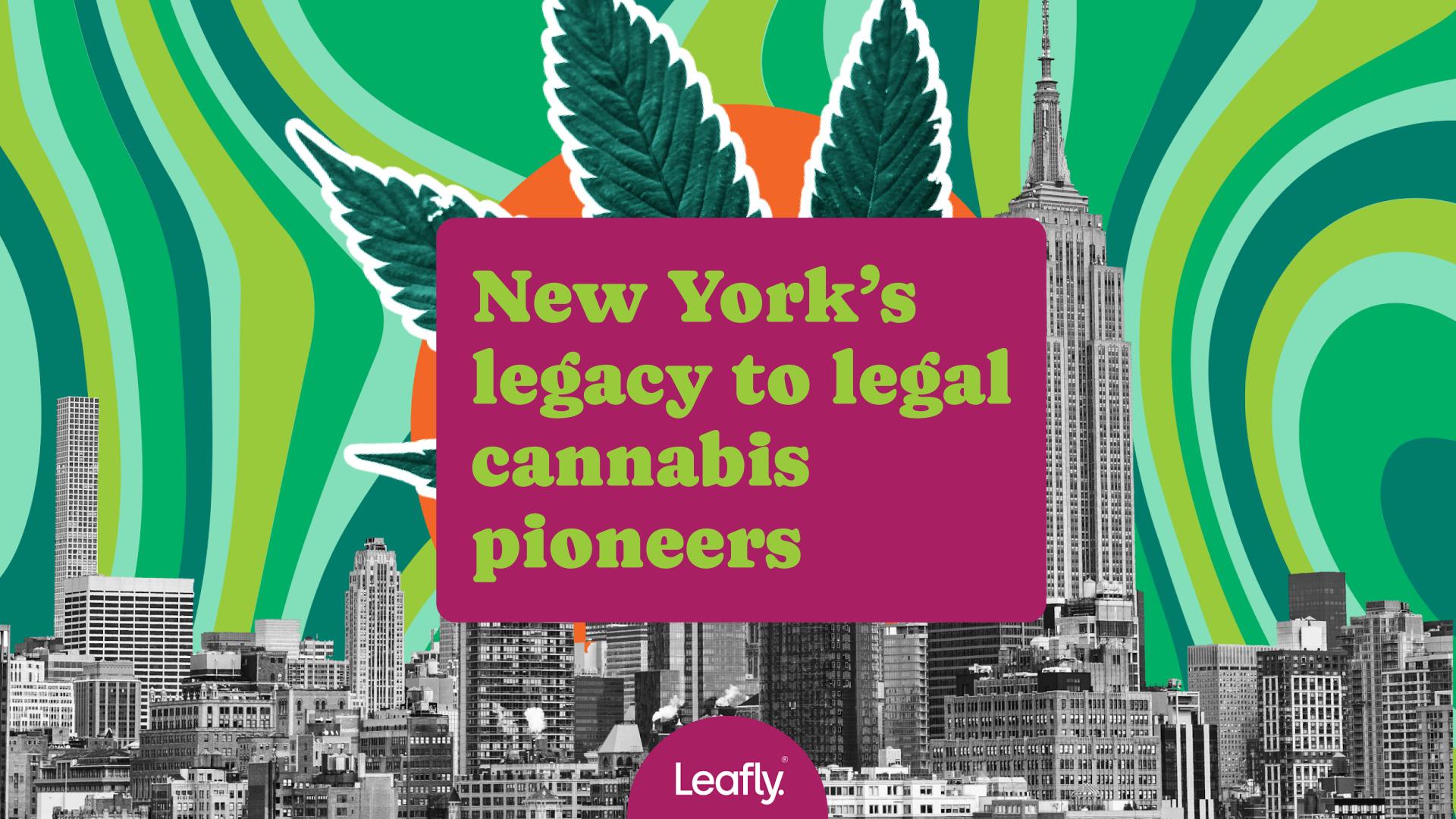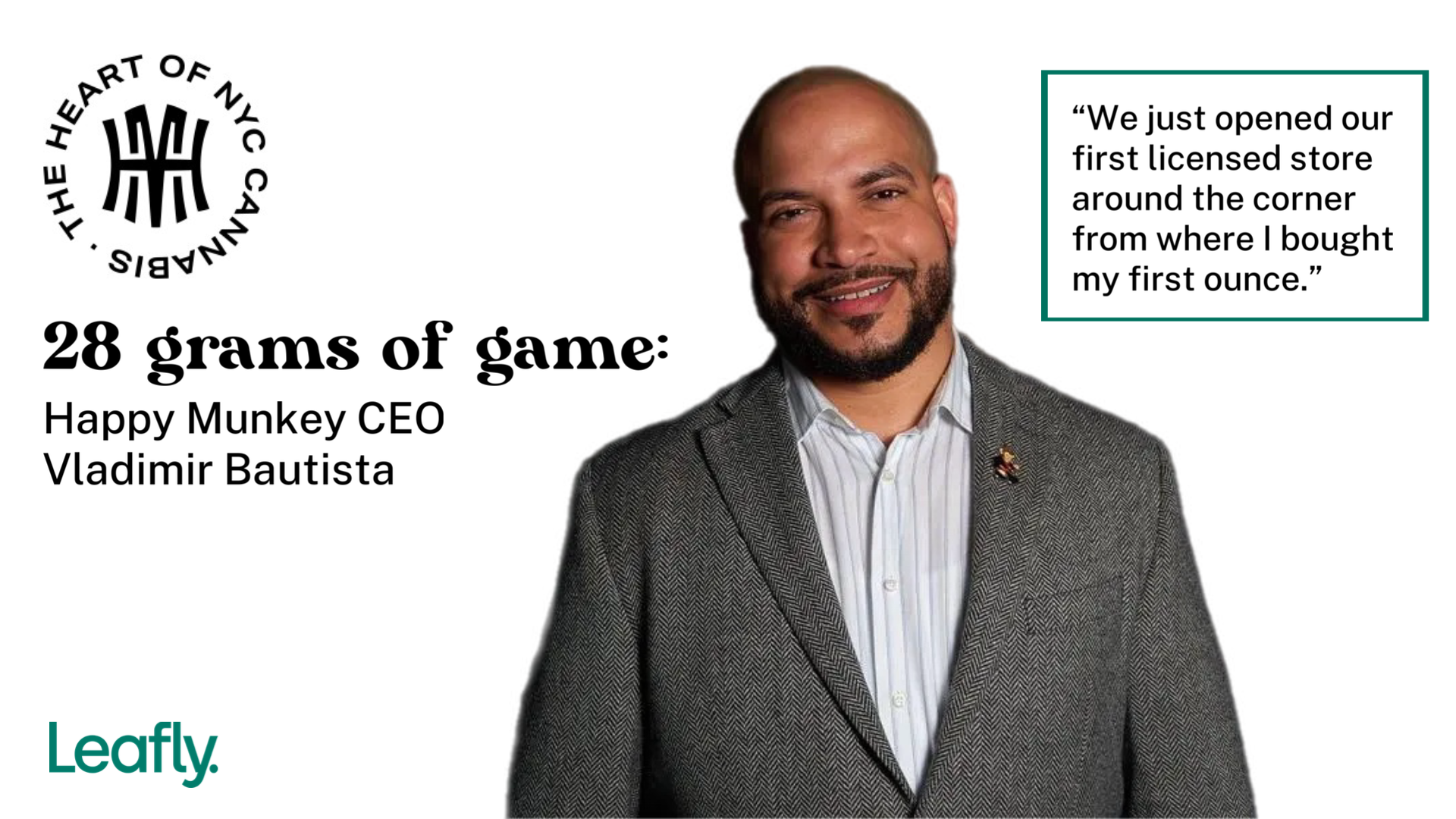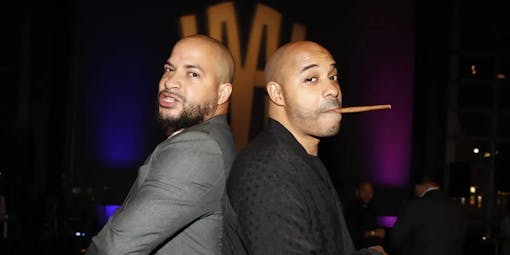By: LMC
Legacy to licensed is the motto for authentic New York brands entering the legal market. Two years ago, I sat with some of NYC’s top legacy pioneers from the New York market. Many of them are now licensed to operate legally as brands or retailers.
Every time a state legalizes cannabis, there is a buffer period where the plant has been legalized or decriminalized—but the market hasn’t fully opened for recreational sales. In 2023, when I visited NYC from Washington, I saw people setting up stands and selling bags like they were running a hot dog stand. But with over 300 stores now open for business, and billions in future tax revenue on the line—things are changing fast.
The good news is that many of New York’s legal dispensaries and brands are run by real New Yorkers with deep legacy roots. Here are the brands that paved the way, and where you can find them on legal dispensary shelves in New York now or in the near future.
Branson
This legend is patiently waiting for his famous triangle bags to hit shelves later this year. Branson was a major conductor and distributor of high-grade marijuana and hash oils in NYC during the early ’90s. Operating in the thick of the War On Drugs, Branson was one of the rare standalone plugs that celebrity smokers visiting NYC could count on to deliver good gas. Hence the chronic name drops on songs from legendary rappers like The Notorious B.I.G., The LOX, Nas, and Redman.
Shiest Bubz
In 2022, Shiest Bubz told Leafly he is taking the term “legacy,” back. In cannabis circles, it’s become a buzzword. Its definition depends on who you ask. And if you ask Bubz, the wordplay is becoming condescending with zero majority-Black-owned brands available on New York dispensary shelves.
“They’re like, ‘Oh, we need to help legacy learn how to transition from here to there.’ Who are you talking about? Not White America. Can’t be talking about them. Impossible. You’re talking about Black people… At the end of the day, it’s not White legacy operators that they’re looking for with deals to capitalize on.”
That’s why Bubz said he hasn’t rushed to join the licensed game. Despite a limited release last year that sold out in days. Over the course of three decades, he’s sold more pounds of flower in New York than any partner he could hope to find. And that before it was legal. He did it without getting caught up in the state’s historically aggressive Drug War enforcement. So he’s understandably hesitant about rushing to market, despite being pre-approved by the state should he choose to pursue a license.

But after giving it some time, Bubz is coming around on the hot-button ‘legacy,’ term. “I like the word legacy,” he told Leafly in January of 2023. He still questions the intentions of those using the term, holding strong that the cannabis landscape is not fertile terrain to be colonized and capitalized. Original members were buying and selling weed before it became regulated. And they will continue to, with or without the government’s permission, or the legal industry’s euphemisms.
Bubz was once a one-man dispensary. He remembers moving 20 pounds in three days. “My father’s from Trinidad so he was always smoking weed,” he told the High Design YouTube channel in a 2023 interview. “The scent of marijuana was basically in my nose since I was born,” Bubz added.
Shop highly rated dispensaries near you
Showing you dispensaries near
Bubz is most known for popularizing Purple Haze through music. He’s widely-credited with coining the nickname “Piff” for the strain. But don’t ask him to pinpoint the original source of one of New York’s favorite strains. “I don’t know who brought haze to New York,” Bubz insists. “My contribution to the haze game is this – prior to me coming into the Haze game, that game was run by Dominicans and the Latin community. If you spoke Spanish, you had a better shot of getting plugged in with the haze than if you were just Black American. Weed, in the beginning, was a thing I would only get from Jamaicans. From the Yardies on 145th and Edgecombe Ave.”
“We didn’t even give a fuck about what a strain name was. We named the weed after the spot. Wherever you got the weed from is what you called the weed. We wasn’t asking what you call the weed. Go get ten bags of that 42nd street pack.” – Shiest Bubz
Shiest Bubz on pioneering Piff in New York
“The name Piff came into the universe because I wasn’t speaking Spanish. The Dominicans would be saying, “Pepper Head,” so we’d call it Pepper Head, not knowing that they’re mispronouncing Purple Haze. We don’t even care what that shit was. All we knew is that shit look like a caterpillar in a bag. And a .3 so small would have four or five of us high.”
Shiest Bubz on being targeted by the War on Drugs
“The era that we’re talking about is the War on Drugs. Being a target of the drugs, you can’t imagine what that feels like unless you’re targeted. Unless you’re Black or Latino. You can’t imagine what it is to know that you’re targeted. And you still gotta go outside and get your money but you know that you’re under binocular. It was dangerous times. Weed is not evil. But going to jail is.”
Shiest Bubz on staying out of legal trouble in the legacy era
“My lawyer asked me how much weed do you move? I said, eh 20 pounds. He told me, keep it under 100 pounds in your possession and 20,000 to the side and you’ll never see jail. I just kept that vibe going and I pushed it to the limit on a lot of things. Then I got into music.”
Shiest Bubz on staying loyal to cannabis
“I made a dedication to myself that I wasn’t gonna be involved in anything that was gonna put me in the big house. I made a oath to myself that if I’m gonna do anything, it’s gonna be weed. I really had a passion for it. I used to read the weed cannabis bibles. From 1990 I was involved with the growers. The weed from upstate was really considered exotic in NYC.”
Happy Munkey
Happy Munkey is one of New York’s most visible and respected “legacy-to-legal” cannabis brands. The brand started as a speak-easy/consumption lounge, then evolved to throw events at 420-friendly venues across NYC while awaiting licensure to open legal dispensaries.
April 20, 2025 will be the first 420 holiday that New Yorkers can legally enjoy the full Happy Munkey Experience with a legal dispensary. Leafly is partnering with Happy Munkey for on-site activations on the big day. You can secure your ticket to the festivities by an item from Happy Munkey’s menu via Leafly starting April 10.
GUMBO

GUMBO is a strain with monster branding worldwide–from the Bronx to Bangkok. Legacy pioneer Luka Brazi and partner Alexis Major told Leafly about their plan to take over cannabis in 2022–and they’ve more than followed through so far. The Trends strain data shows that GUMBO has been hovering around the top 10 strains in New York since 2023, thanks in large part to Brazi and Major’s massive influence, including local events, merch, and content.
La Marina Boyz
Legendary cannabis breeder and grower White Boy Kev explained his origin story—including the roots of his memorable nickname. “I grew up in a Dominican neighborhood, uptown in Washington Heights,” recalled Kev, whose real name is Kevin O’Rourke. “It used to be an all Irish and Jewish neighborhood (until about ‘83). My family was the only one that didn’t leave… Everybody else was Dominican… It was just me—White Boy Kev, Un Blanquito. That’s how everybody knew me.”
Today, his old nickname is a premier brand name among NYC weed connoisseurs. And now that cannabis is legal in New York and New Jersey, Kev and his La Marina Boyz’ brand is positioned to be a smash hit. The only question is if he wants to deal with the headache of regulators, amateurs and opportunists after putting in decades as a pioneer.
Kev recently decided to dip into the booming legal business in New Jersey with Nick and Dane from the company Niche. And Kev’s longtime partners Cuban Joe the Hardway and Little Nelson (@BlockworkGrower) have a license in Florida. Kev shared, “I’m going to Florida through a licensing deal as a brand with them.”
After that, only time will tell if NYC’s Haze King will bring his talents to New York’s legal market.
How Whiteboy Kev became a Haze legend
I started selling weed around 91. Then in 93 Haze came about… everybody’s a weed dealer now. Everybody with a backpack… some people looked at me like I was a crack dealer because I sold weed.
How Kev’s Haze powered the infamous La Marina venue
I did a successful business with my brother in 99. We do La Marina. Probably the most iconic Dominican spot in NYC. But it was two Irish brothers who did it.
Booking music like Romeo santos from aVentura he would get 3,000 people to come out for a 12-12 party
That was his first legal transition.
How Kev is handling the legacy-to-legal transition
“I cut off from being on the corners because I’m trying to transition. But I got put under federal investigation in a joint task forced with NYPD. They locked my brother up as a king pin. My brother never sold drugs in his life. I’m very lucky I never got caught. It’s so crazy that my brother goes to jail as a kingpin and he never sold drugs in his life. So I feel like it’s cause of me it happened to him. The unwanted attention.
How Harlem became the heart of the East Coast’s cannabis trade
“If you’re coming from Florida or Mass, you’re coming thru 1-95. So everybody coming from Jersey, anywhere, came thorough my neighborhood. So I Washington Heights back then, every block was a spot. You would drive by and see 500 guys on a block all hustling. It was almost an open air market.”
Torches (powered by Polanco Brothers)
12 E 42nd St, New York, NY — recreational

One of New York’s most recognized names in cannabis, The Polanco Brothers already have two dispensaries open in New York with more on the way. Check out Torches (powered by Polanco Brothers) near Bryant Park next time you’re in Midtown, or hit their Ridgewood store in Brooklyn for one of New York’s most authentic legal cannabis experiences, including top brands, knowledgable budtenders, and immaculate vibes.
Budega
Budega founder Alex Norman has dealt with delays and copycat brands on his path to opening. Norman is now poised to transition his legacy brand into a licensed player on the market. His application to open in Brooklyn was delayed by a messy lawsuit in 2022. The plan was for New Yorkers with cannabis convictions, like Norman, to open the state’s first dispensaries. But that was complicated by a number of lawsuits and setbacks. Norman’s getting close to opening day. Follow the journey on Instagram as Budega prepares to go online.
Certz (coming soon to Manhattan)
One of New York’s most beloved cannabis lounges is finally licensed. They’re opening soon. So get familiar with this legacy-to-legal success story that specializes in breeding, selling, and hosting one of New York’s most essential cannabis experiences. Follow CEO Steph V. and the Voice of the Sesh Euro V for more updates on their plans for the licensed market.
Co-founder Steph.V explained how they became one of New York’s top legacy brands during a sit-down in 2023. “Music studios, that was my way of doing it,” he said. “I owned a music studio in The Bronx, Manhattan. I could bust my moves here, I could bust my moves there.”
The pandemic put things into overdrive. Steph.V remembers: “Everybody started getting money because of all the PPP loans and people getting money they never got before. So they was buying work. Before that, it was just blocks you went to to buy. You had to come to a certain block. Go in a building. Buy your shit. Weave police. The old-fashioned way.
5Boro

5Boro is one of New York’s most-respected legacy brands. Already on shelves at dozens of dispensaries, the distinct packaging and array of winning strains like Double Grape are favorites around the state. 5Boro is available now at Bleu Leaf in the Bronx or Travel Agency in Manhattan.
Try their hybrid of Sour Stomper and Grape Crinkle, showcases terpenes including B-Myrcene, Limonene, A-Pinene, and B-Caryophyllene. Its effects are lauded for inducing relaxation and happiness while stimulating appetite without diminishing motivation. With aromas reminiscent of sweet and sour grapes, accompanied by hints of oats and wood, it offers a complex flavor profile ranging from fruity sweetness to earthy notes, with a pungent, herbal aftertaste.
The Mechanic’s Farm
Recently featured in Leafly’s top NY flower brands list, this craft quality grower made a huge name for himself on the legacy market. Now he’s partnering with top dispensaries like Good Grades and Torches for limited drops. His first run sold out in a few hours earlier this month. Stay tuned to Good Grades and Torches on Leafly for menu updates and restocks from The Mechanic’s Farm.
Chef for Higher
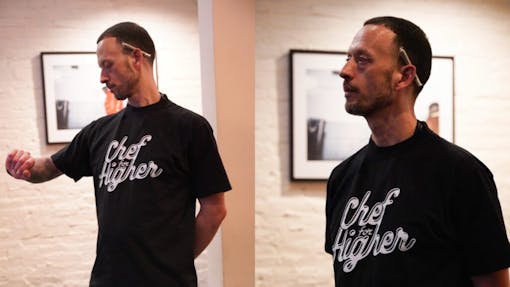
New York’s first culinary lifestyle brand was founded by BIPOC and women entrepreneurs well before 2021—legacy to legal. Chef for Higher launched April 19 last year on the adult-use market with the release of the Cooking Essentials (coconut oil, extra virgin olive oil, honey, and ghee), the first of its kind in New York’s legal dispensaries. Chef for Higher also offers jellies, as well as B2B services and curated dining experiences.
Work’n’Roll
During New York’s grey market period (2022-2024), Work’n’Roll was known as the place where everything starts for legal cannabis brands. The cCulminate a scenario that always feels like the right place at the right time.
“This place really reminds me of Spain. It definitely has this Barcelona social club vibe to it. It has a community the same people are here often. There’s Great ideas being generated from it.” – I’m with RJ
For People trying to figure out where they belong in the industry. Work’n’Roll is a market incubator. The owners and operators are pioneers of the consumption lounge space. Now they are transitioning to legal offerings like Budtender XP events, marketing services, and more.
I asked co-founder Julia Deviatkina if New York regulators care about the small legacy cannabis businesses at the heart of the Work’n’Roll community. “These places are critical. Yes, (the regulators) care. But I would say the government should help us with monetizing these spaces. Being the community space, it doesn’t make a living, (so) it doesn’t allow you to have employees. There’s a lot of little parts to figuring out how this can be profitable for the government, too. To make their tax money, and for us to exist.”
Deviatkina believes that cannabis-themed businesses should not rely on the plant to generate magical value overnight. The key is building a solid business that makes money with or without cannabis. “A place must sell something, time or products,” she said. “It should already be a sustainable business without cannabis. Restaurant, coffee shop, co-working space, yoga and pilates studio — it should be sustainable by itself as a business. And then you add a little infusion.”









